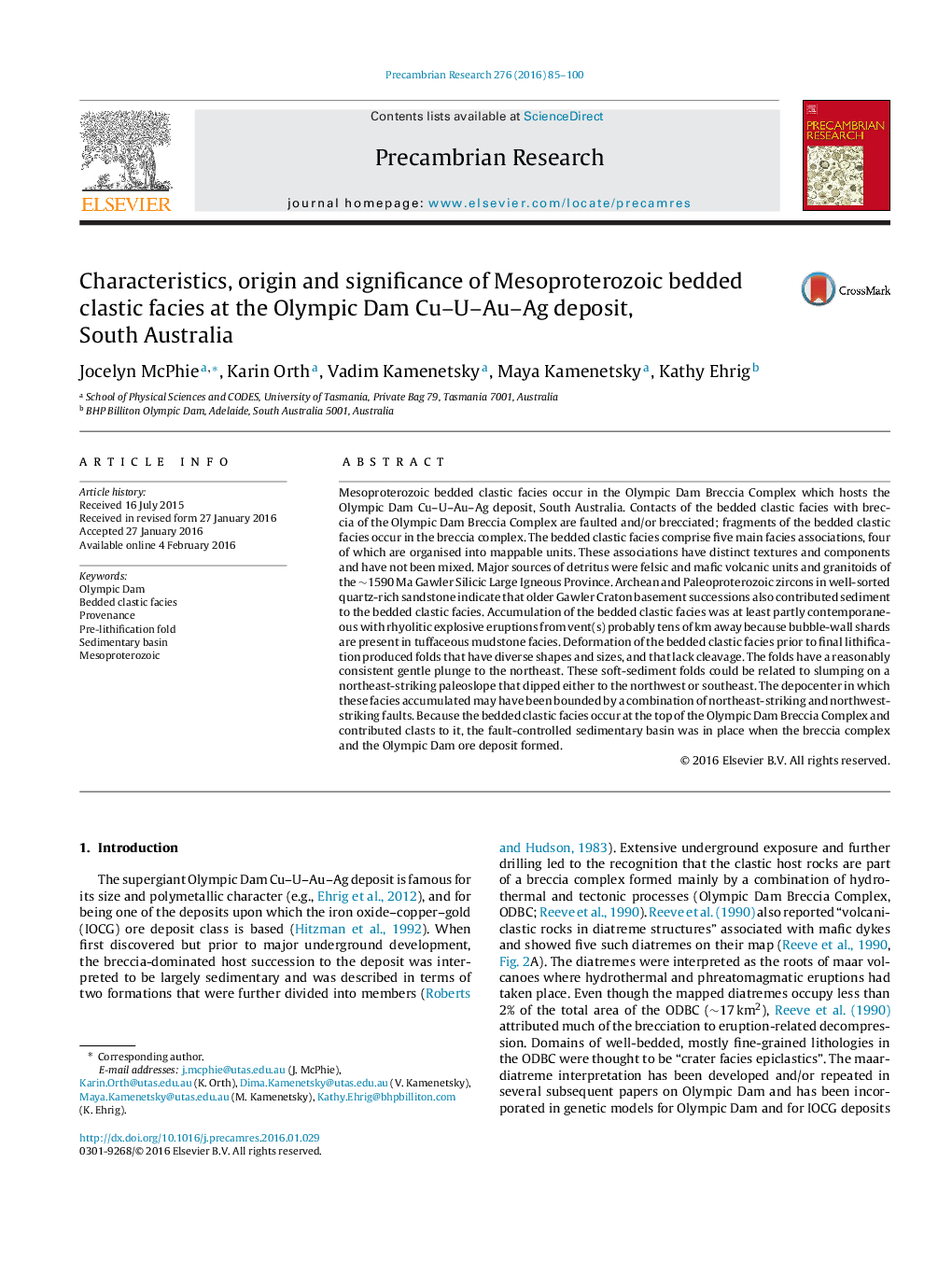| کد مقاله | کد نشریه | سال انتشار | مقاله انگلیسی | نسخه تمام متن |
|---|---|---|---|---|
| 4722399 | 1639599 | 2016 | 16 صفحه PDF | دانلود رایگان |

• Five bedded clastic facies associations have distinct composition and grain size.
• Bedded clastic facies contain zircons dated at 1600 Ma, 1740 Ma, 1900 Ma and 2500 Ma.
• Fold axes of pre-lithification folds plunge gently to the northeast.
• Structure and facies suggest deposition in a fault-controlled sedimentary basin.
Mesoproterozoic bedded clastic facies occur in the Olympic Dam Breccia Complex which hosts the Olympic Dam Cu–U–Au–Ag deposit, South Australia. Contacts of the bedded clastic facies with breccia of the Olympic Dam Breccia Complex are faulted and/or brecciated; fragments of the bedded clastic facies occur in the breccia complex. The bedded clastic facies comprise five main facies associations, four of which are organised into mappable units. These associations have distinct textures and components and have not been mixed. Major sources of detritus were felsic and mafic volcanic units and granitoids of the ∼1590 Ma Gawler Silicic Large Igneous Province. Archean and Paleoproterozoic zircons in well-sorted quartz-rich sandstone indicate that older Gawler Craton basement successions also contributed sediment to the bedded clastic facies. Accumulation of the bedded clastic facies was at least partly contemporaneous with rhyolitic explosive eruptions from vent(s) probably tens of km away because bubble-wall shards are present in tuffaceous mudstone facies. Deformation of the bedded clastic facies prior to final lithification produced folds that have diverse shapes and sizes, and that lack cleavage. The folds have a reasonably consistent gentle plunge to the northeast. These soft-sediment folds could be related to slumping on a northeast-striking paleoslope that dipped either to the northwest or southeast. The depocenter in which these facies accumulated may have been bounded by a combination of northeast-striking and northwest-striking faults. Because the bedded clastic facies occur at the top of the Olympic Dam Breccia Complex and contributed clasts to it, the fault-controlled sedimentary basin was in place when the breccia complex and the Olympic Dam ore deposit formed.
Journal: Precambrian Research - Volume 276, May 2016, Pages 85–100